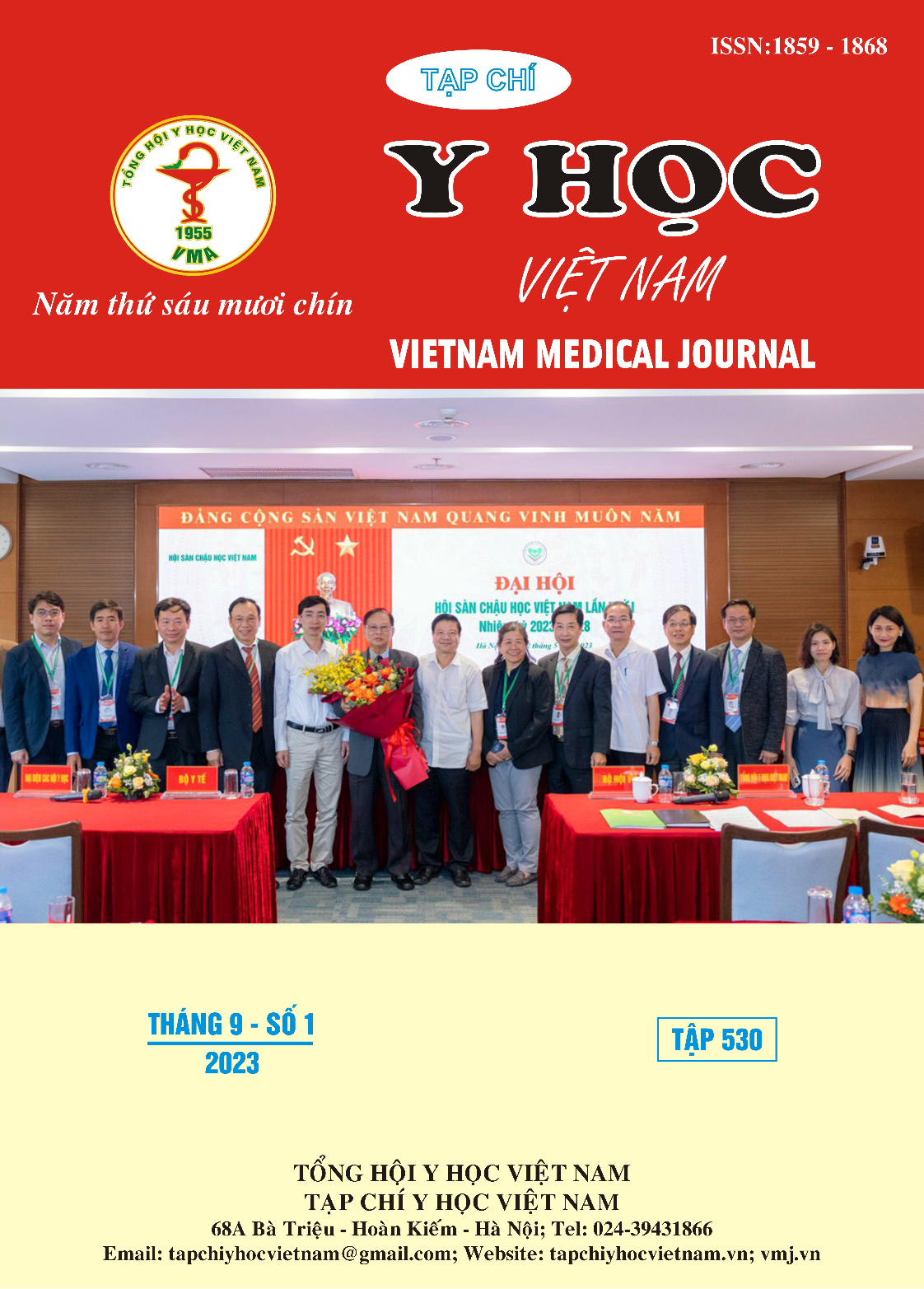ANALYSIS OF SOME RISK FACTORS IN STROKE PATIENTS AGED UNDER 45
Main Article Content
Abstract
Purpose: To investigate some risk factors and analyze the correlation in stroke patients under 45 years of age. Methods: A "case-control" study, a cross-sectional description of 130 subjects. Patients were divided into two groups from under 45 years old (research group) and over 45 years old (control group) at Stroke Department- 108 Central Military Hospital and 103 Military Hospital. Results: The most common history is hypertension (42.4%); alcoholism and smoking (18.2% and 25.8%); heart failure, cardiomyopathy, mitral valve stenosis, atrial fibrillation accounted for 12.1%; other diseases (Coagulopathy/ Moyamoya) is 7.5%; Normal medical history is 36.4% - statistically significant difference compared to controls. Adherence to pre-hospital hypertension treatment was associated with a 0.177 times lower risk of stroke [OR=0.177; (0.047-0.663), 0.006] compared with no treatment. Alcoholism and tobacco use were 3,354 and 3,462 times higher, respectively, compared with non-users. Obesity (based on BMI) was higher in the study group than in the control group, p<0.05. Conclusion: The modifiable risk factors account for a high proportion of stroke under 45 years of age, non-compliance with treatment regimen and lifestyle increase the risk of stroke.
Article Details
Keywords
Stroke, under 45 years old, risk factors.
References
2. D. Mozaffarian et al., “Heart Disease and Stroke Statistics—2015 Update,” Circulation, vol. 131, no. 4, Jan. 2015, doi: 10.1161/CIR.0000000000000152.
3. M. J. O’Donnell et al., “Risk factors for ischaemic and intracerebral haemorrhagic stroke in 22 countries (the INTERSTROKE study): a case-control study,” The Lancet, vol. 376, no. 9735, pp. 112–123, Jul. 2010, doi: 10.1016/S0140-6736 (10)60834-3.
4. M. J. O’Donnell et al., “Global and regional effects of potentially modifiable risk factors associated with acute stroke in 32 countries (INTERSTROKE): a case-control study,” Lancet, vol. 388, no. 10046, pp. 761–775, Aug. 2016, doi: 10.1016/S0140-6736(16)30506-2.
5. M. J. Bos, P. J. Koudstaal, A. Hofman, and M. A. Ikram, “Modifiable Etiological Factors and the Burden of Stroke from the Rotterdam Study: A Population-Based Cohort Study,” PLoS Med, vol. 11, no. 4, p. e1001634, 2014, doi: 10.1371/ JOURNAL.PMED.1001634.
6. B. Mallmann, S. C. Fuchs, M. Gus, F. D. Fuchs, and L. B. Moreira, “Population-Attributable Risks for Ischemic Stroke in a Community in South Brazil: A Case-Control Study,” PLoS One, vol. 7, no. 4, p. e35680, Apr. 2012, doi: 10.1371/JOURNAL.PONE.0035680.
7. J. Putaala et al., “Analysis of 1008 Consecutive Patients Aged 15 to 49 With First-Ever Ischemic Stroke,” Stroke, vol. 40, no. 4, pp. 1195–1203, Apr. 2009, doi: 10.1161/STROKEAHA.108.529883.
8. K. Boehme, C. Esenwa, and M. S. V. Elkind, “Stroke Risk Factors, Genetics, and Prevention,” Circ Res, vol. 120, no. 3, p. 472, Feb. 2017, doi: 10.1161/CIRCRESAHA.116.308398.
9. M. Awadh, N. MacDougall, C. Santosh, E. Teasdale, T. Baird, and K. W. Muir, “Early recurrent ischemic stroke complicating intravenous thrombolysis for stroke: incidence and association with atrial fibrillation,” Stroke, vol. 41, no. 9, pp. 1990–1995, Sep. 2010, doi: 10.1161/ STROKEAHA.109.569459.
10. Aigner, U. Grittner, A. Rolfs, B. Norrving, B. Siegerink, and M. A. Busch, “Contribution of Established Stroke Risk Factors to the Burden of Stroke in Young Adults,” Stroke, vol. 48, no. 7, pp. 1744–1751, Jul. 2017, doi: 10.1161/ STROKEAHA.117.016599.


